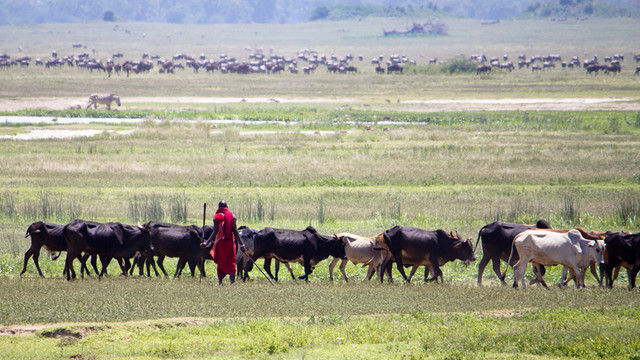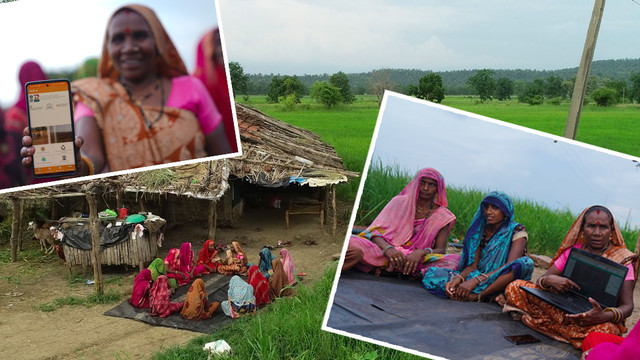Moveable feast: the floating gardens of Bangladesh
The farmers of southern Bangladesh have seen it all: cyclones, catastrophic flooding, silted-up rivers and creeping salination. Their South Asian homeland — a wedge of the tropics regularly exposed to searing heat and heavy monsoons — is one of the most climate-vulnerable countries on Earth.
How some of the world’s poorest farmers are coping with climate change
The farmers of southern Bangladesh have seen it all: cyclones, catastrophic flooding, silted-up rivers and creeping salination. Their South Asian homeland — a wedge of the tropics regularly exposed to searing heat and heavy monsoons — is one of the most climate-vulnerable countries on Earth.
Out of necessity, the poor here are past masters at adapting to tough conditions. But as climate change progresses in the region, weather events are intensifying, weather patterns are shifting, and many Bangladeshis are struggling to adjust.
Collective ingenuity and adaptable traditions are key for the survival of poor communities facing adversity. So IIED, with CLACC1 — its network of experts working on adaptation in the poorest countries — is exploring community-based adaptation (CBA) with a number of other agencies and institutes through a CARE Canada/Bangladesh project in the southwest of the country.
CBA is an approach that encourages local people to harness their own skills and knowledge in adapting to the impacts of climate change, and so fosters the self-reliance, drive and commitment they will need to meet this massive challenge.
Mud, sweat and tears
In Bangladesh, the evidence for climate-driven change is piling up. The monsoon season is shorter now, for instance, yet rainfall levels are the same. This indicates that rain is falling in torrential bursts rather than steadily over time. And that spells disaster for agriculture, as crops may fail under the erratic rainfall, or wash away in flash floods.
Bangladesh is also battered by fierce tropical storms, thanks to its location straddling the Tropic of Cancer. And these are intensifying. The cyclones of 1970, 1985, 1991 and 2007 have killed well over 650,000 people, with the last — Cyclone Sidr — affecting an estimated 10 million.
The cumulative effect of the hard rains and storms, coupled with rising sea levels and glacial melt in the Himalayas, is unpredictable and often severe flooding.
Flooding is the norm in Bangladesh. This is, after all, a nation built on the low-lying floodplains of four major rivers that converge to form the world’s biggest delta. But it is also the most densely populated country on Earth.
So when the floodwaters that swill over the great central delta rise higher than usual or at unexpected times, the risk to poor farmers’ lives and livelihoods rises with them. Crops can disappear, the silt bars many live on shrink through erosion, and the land be left ever more waterlogged when the floods retreat.
Vegetable arks
Looking for ways to stay afloat, wetland farmers are turning to a half-forgotten local tradition: vegetable gardens that ride the rising waters, known as baira.
Baira are a CBA solution that ideally fits the challenge. Take the materials. These floating plots are made mainly from the highly invasive weed water hyacinth, and so turn a problem into an asset.
Then there is their ingenious construction. Flexible mats made to rise and fall on the river surface as floods ebb and flow, they simply ride out any inundation no matter how prolonged.
These mobile smallholdings are also simple for farmers to put together. First, bamboo frames are placed over mats of hyacinth. More plants are packed in, and the whole is topped with soil, cow dung and old, rotting baira — a technique with built-in recyclability.
Planted up with cauliflower, tomato, okra and turmeric seedlings, they provide household food as well as cash.
A global model?
The advantages of baira are manifold. Crops never wash away. The platforms are made of free, locally abundant materials cleverly used. They do not pollute, and are recyclable. And they are capable of keeping households supplied with subsistence and market produce throughout the year.
More, this is a replicable technique. Water hyacinth is found round the world. Cheap, green and effective: what more can one want?
The baira of Bangladesh are just one example of CBA. IIED and its networks of international partners are helping to identify best practice in CBA and share these workable ideas with communities round the world.
BAIRA: The Floating Gardens
Capacity strengthening in the Least developed countries for Adaptation to Climate Change (CLACC)


